Correct Answer

verified
Correct Answer
verified
Multiple Choice
What is the kinetic product for the following reaction? 
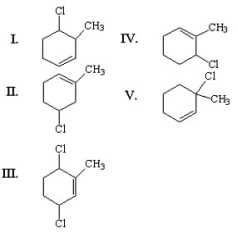
A) I
B) II
C) III
D) IV
E) V
Correct Answer

verified
Correct Answer
verified
Multiple Choice
What is/are the product(s) from the following reaction? 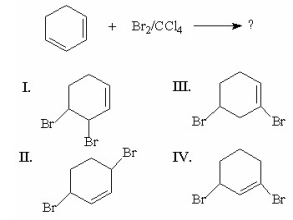
A) I and II
B) I and III
C) I and IV
D) II and III
E) II and IV
Correct Answer

verified
Correct Answer
verified
Short Answer
One of the following compounds is aromatic and the other is antiaromatic. Which is which? 
Correct Answer

verified
a)is aroma...View Answer
Show Answer
Correct Answer
verified
View Answer
Essay
Is the following molecule aromatic? Explain. 
Correct Answer

verified
Yes, it is aromatic ...View Answer
Show Answer
Correct Answer
verified
View Answer
Multiple Choice
When 1, 3-butadiene reacts with CH2  CHCN, which of the terms below best describes the product mixture?
CHCN, which of the terms below best describes the product mixture?
A) a mixture of two diastereomers
B) a single compound
C) a racemic mixture
D) optically active
E) a mixture of bicyclic compounds
Correct Answer

verified
Correct Answer
verified
Multiple Choice
What compound results from the 1, 4-addition of one equivalent of HBr to 1, 3-butadiene?
A) 1-bromo-1-butene
B) 2-bromo-2-butene
C) 4-bromo-1-butene
D) 3-bromo-1-butene
E) 1-bromo-2-butene
Correct Answer

verified
Correct Answer
verified
Multiple Choice
Which of the following is/are the main product(s) of the following reaction? CH2  CH-CH
CH-CH  CH2
CH2
 ?
?
A) ![]()
B) ![]()
C) ![]()
D) A and B
E) A and C
Correct Answer

verified
Correct Answer
verified
Multiple Choice
Identify the correctly drawn arrows.
A) ![]()
B) ![]()
C) ![]()
D) ![]()
E) ![]()
Correct Answer

verified
Correct Answer
verified
Essay
What diene and dienophile would react to give the product below? 
Correct Answer

verified
Correct Answer
verified
Multiple Choice
Give the major organic product for the reaction. 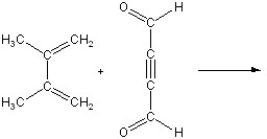
A) ![]()
B) ![]()
C) ![]()
D) ![]()
E) no reaction
Correct Answer

verified
Correct Answer
verified
Essay
Draw the important resonance contributing forms for the structure shown below. 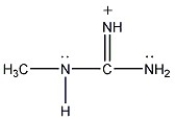
Correct Answer

verified
Correct Answer
verified
Essay
Mark the most electron-rich carbon atom in the compound below with an asterisk.
Correct Answer

verified
Correct Answer
verified
Essay
Provide the major organic product. 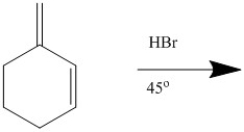
Correct Answer

verified
Correct Answer
verified
Essay
In the addition of HBr to conjugated dienes, is the product which results from 1,2-addition or that which results from 1,4-addition typically the product of kinetic control?
Correct Answer

verified
The product of kinet...View Answer
Show Answer
Correct Answer
verified
View Answer
Multiple Choice
Which of the following compounds is aromatic? 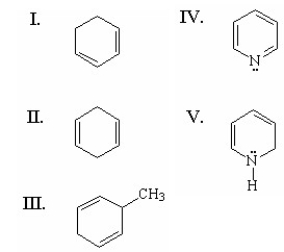
A) I
B) II
C) III
D) IV
E) V
Correct Answer

verified
Correct Answer
verified
Essay
What is suggested by the fact that benzene's molar heat of hydrogenation is 36 kcal less than three times the molar heat of hydrogenation of cyclohexene?
Correct Answer

verified
This suggests that t...View Answer
Show Answer
Correct Answer
verified
View Answer
Essay
Provide the structure of the major organic product in the following reaction. 
Correct Answer

verified
 _TB1830_00...
_TB1830_00...View Answer
Show Answer
Correct Answer
verified
View Answer
Essay
What diene and dienophile should be used to synthesize the compound below and its enantiomer? 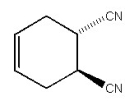
Correct Answer

verified
Correct Answer
verified
Multiple Choice
The Diels-Alder reaction is a concerted reaction; this means that ________.
A) a mixture of endo and exo products is formed
B) all bond making and bond breaking occurs simultaneously
C) the products contain rings
D) the reaction follows Markovnikov's rule
E) the reaction is highly endothermic
Correct Answer

verified
Correct Answer
verified
Showing 81 - 100 of 166
Related Exams